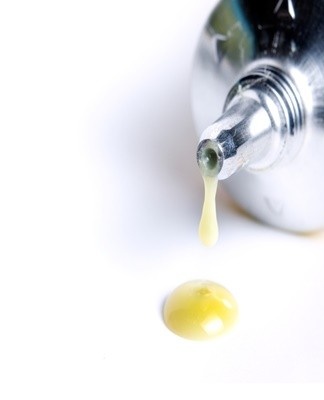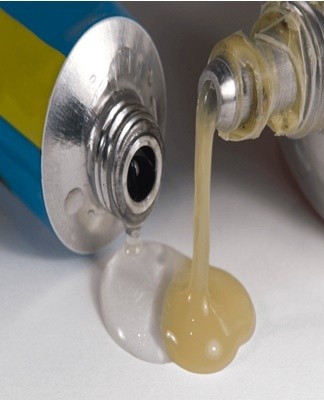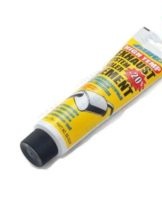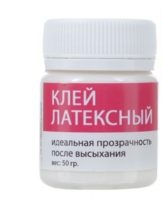Technical characteristics and composition of glue VK-9, instructions for use
Modern adhesives make it easier to work with materials. Thanks to them, it became possible to firmly and for a long time connect the surfaces of products of the same and different composition. For example, structures made of metal, glass, glass and metal, plastic and glass, plastic and ceramic. For these purposes, in everyday life and industrial conditions, VK-9 glue is often used.
What is the VK-9 kit
The adhesive set contains two types of resins.Mixing the components results in a composition that forms a strong joint when solidified.VK 9 is available in tubes of different sizes. The method of application is indicated by the manufacturer. The mixture obtained is a fluid plastic mass which makes it possible to fill cavities and hard-to-reach surfaces.
Composition and properties
The ratio of epoxy and polyamide resins in VK-9 is 1: 2, in mass units - 60:40. Visually - a gray, viscous mass. Additional components - organosilicon compounds and mineral inclusions:
- asbestos;
- boron nitride;
- titanium dioxide.
The composition composition hardens at a temperature of +20 degrees. Heating the components during mixing to boiling leads to crystallization and loss of adhesive properties.The mixture retains the property of bonding surfaces for 2.5 hours. The seal obtained after hardening is very resistant, does not let water through, does not react to acids, alkalis, heating and does not shrink.
The resins included in VK-9 do not conduct electric current.
The maximum tensile strength after curing at +20 degrees is reached during the day:
- taken after 2 hours;
- pressure resistance of 10-12 technical atmospheres (atm) - after 5-7 hours;
- in 150-160 technical atmospheres (atm) - after 18-20 hours.
The in-plane shear strength ranges from 140 atm at +20 degrees to 45 atm at +125 degrees. The adhesive bond retains working qualities at temperatures up to +125 degrees. At +200 degrees, functionality - 500 hours, at +250 degrees - 5 hours. Each of the components of the adhesive has advantages, the combination of which generally gives the desired properties.

An epoxy resin
The epoxy resin of VK 9 is a brown, transparent and viscous liquid.
Characteristics of the substance:
- gives a strong bond with metal surfaces;
- resistant to aggressive chemical influences;
- uniform solidification, without shells and cracks;
- does not collapse under the influence of temperature;
- does not pass water;
- during the curing reaction, phenols and formaldehydes evaporate.
In its pure form, the epoxy joint is not flexible enough: it does not support vibrations.
Polyamide resin
Polyamide and epoxy resins mix well.
Polyamide polymer:
- elastic;
- slightly absorbs water;
- does not emit toxic fumes;
- has a high density after solidification;
- crush resistance.
The synthetic compound belongs to surfactants, superior in adhesion property to epoxy resin.
Appointment
VK-9 is used in everyday life and in industry, which is explained by its ability to create a strong bond with non-porous materials:
- metal;
- glass;
- concrete;
- Plastic;
- ceramic.

Bonded products retain their shape and strength when used under heating conditions, which is used in radio engineering. Glue is used in the production and repair of structures made of combined materials: metal-glass, ceramic-glass.
Manual
Working with VK-9 consists of 3 steps:
- preparatory;
- worker;
- final.
First, before applying the glue, it is necessary to prepare the surfaces. Metals, in the presence of rust, are smoothed with sandpaper. To prevent corrosion, the gaskets are treated with kerosene or gasoline, which are then removed with a solvent. Glass, ceramics, concrete are washed with water, if there is contamination, after drying, they are wiped with a degreaser.
At the second stage, the working staff is prepared in the indicated proportions. Using a spatula / brush / spray, apply a thin layer to the prepared surfaces.
The meaning of the final step is to create a strong bond. To do this, the treated areas should be pressed against each other with effort and left in this position until completely solidified.
Storage conditions required
Ready-to-use glue should be applied no later than 2 hours. VK-9 components have a service life of up to 12 months. Epoxy resin requires special storage conditions, failure to comply with which affects its quality:
- use of factory packaging;
- protection against exposure to ultraviolet light;
- cooling and overheating.
Do not allow mixing of unused components during storage. If one composition ended earlier, it is recommended not to use the second in the future.

Precautionary measures
During the polymerization process of VK-9, health-damaging phenols and formaldehydes are released. Even light vapors can cause an allergic reaction in people with weakened immunity in the form of itching, rashes and rhinitis in people with weakened immunity. The glue on the skin, if not removed, can cause a chemical burn, which takes a long time and is difficult to heal.
Epoxy splashes that have entered the eyes cannot be removed on their own. You will need an urgent call to an ophthalmologist. The manufacturer's instructions indicate that it is not recommended to work with resins for people under the age of 18.
To protect yourself from vapors and skin contact with resins during mixing and handling, it is necessary to:
- Respirator. Type: gas mask. Filter element: activated carbon, oxygen cartridge.
- Protective glasses.
- Overalls.
- Gloves.
This degree of protection is necessary when filling large areas, when harmful emissions can have a pathogenic effect on the liver, heart and stomach. For small jobs, latex gloves and goggles are sufficient.
Additional tips and tricks
To get the finished composition, disposable dishes are needed, which cannot be cleaned after using the glue. Mixing of components is necessary with a metal or glass rod. The use of wooden sticks is impractical due to high porosity.
The polyamide resin is poured into the epoxy, stirring constantly for the uniformity of the composition.To accelerate the polymerization, the parts to be bonded must be heated. At +50 degrees, final hardening will occur within an hour. In a room with a temperature of + 15 ... + 18 degrees, gluing will end in 1.5-2 days.



